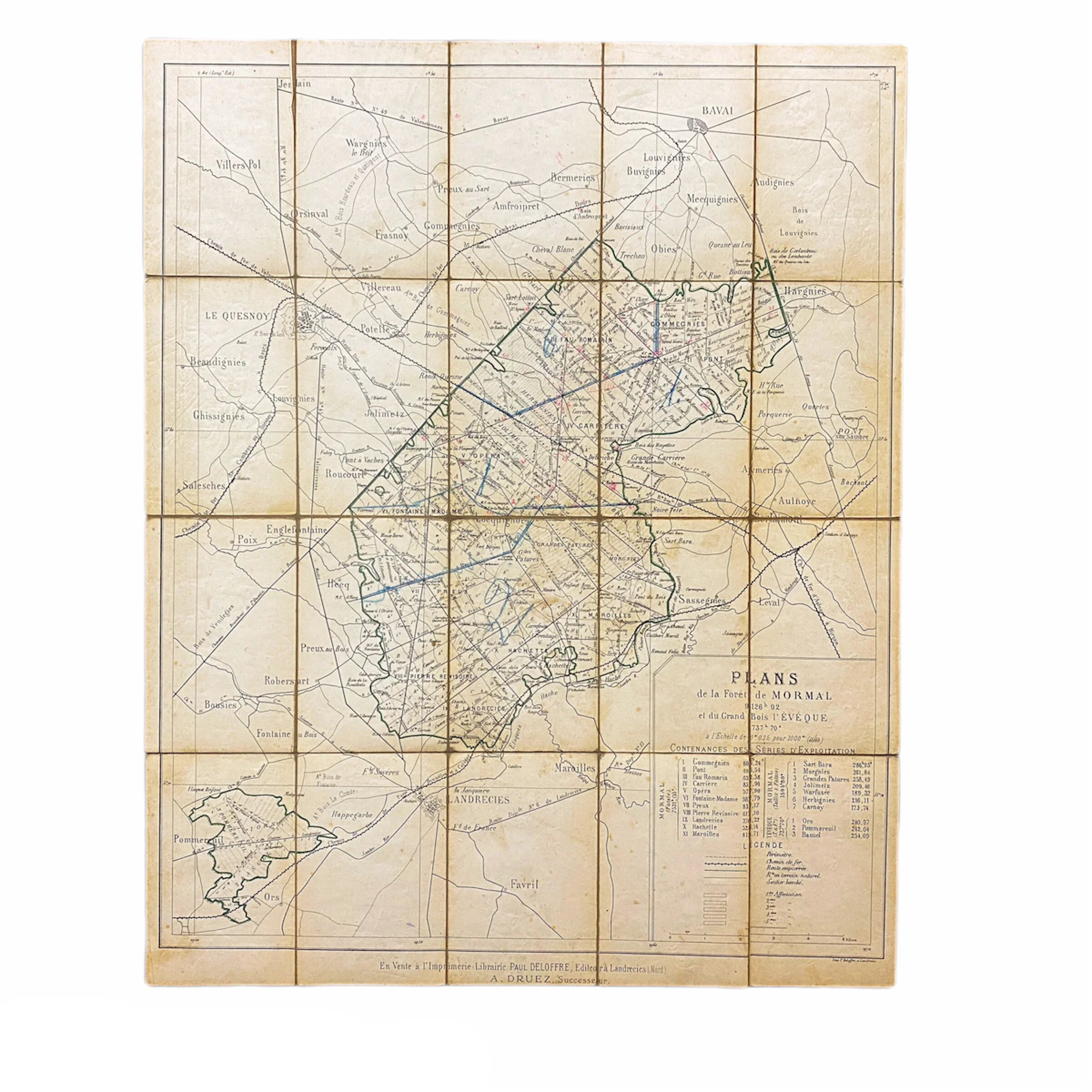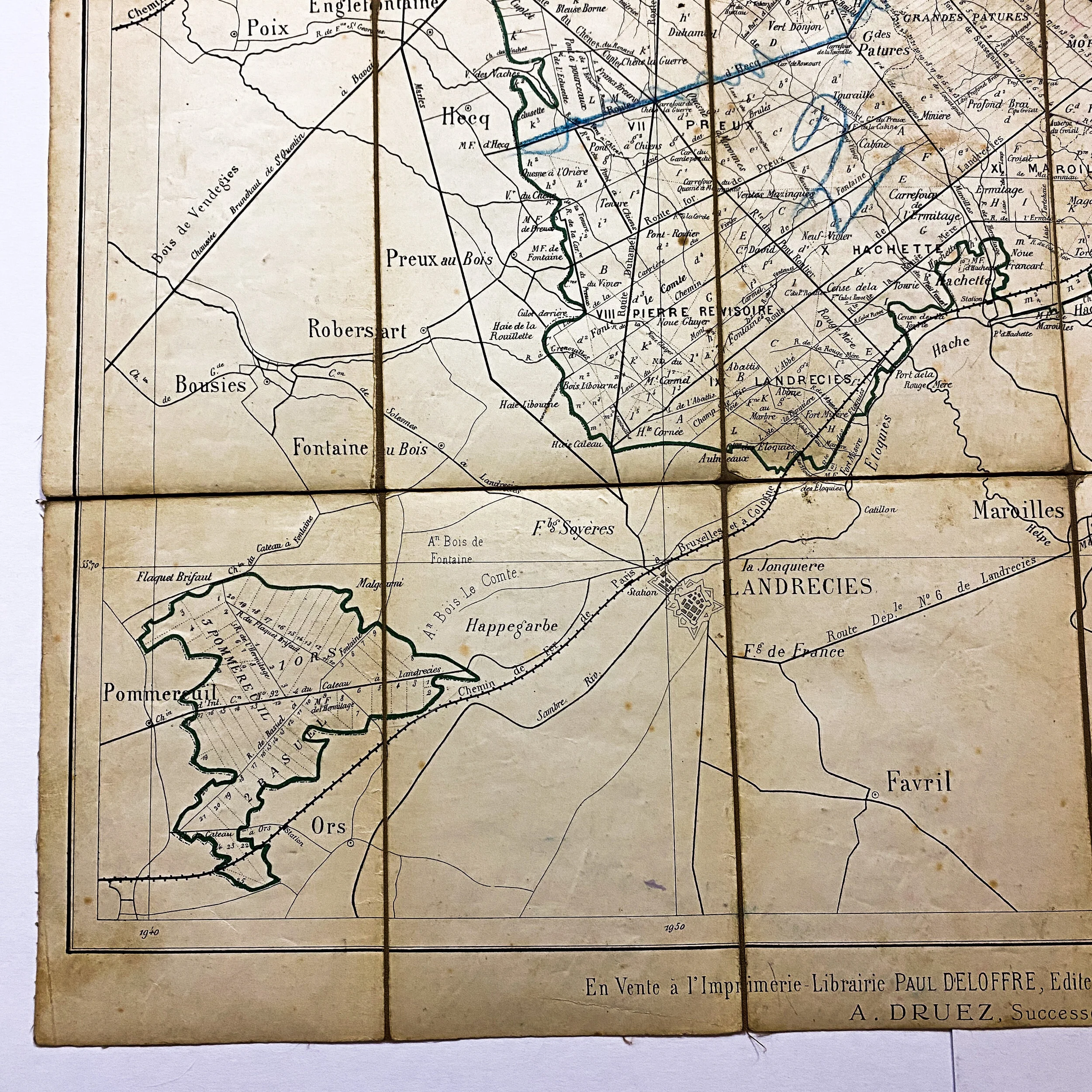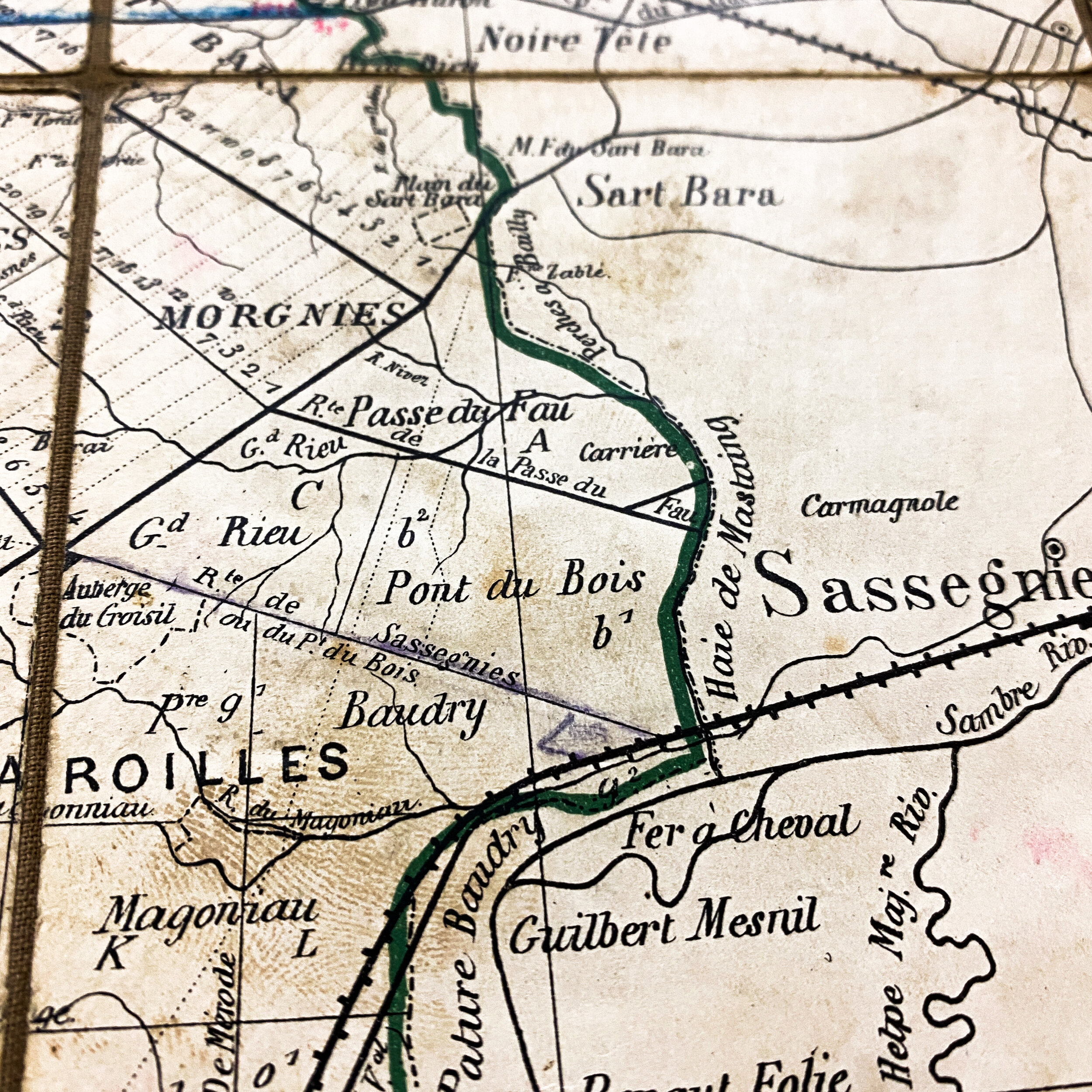Battle of the Sambre French Field Map of the Mormal Forest















Battle of the Sambre French Field Map of the Mormal Forest
Size: 21 x 26.5 inches
This original WWI French field map of the Mormal Forest is heavily marked with trench lines and troop movements all over the large Mormal Forest section of the map. The infamous Mormal Forest is the last offensive action of the World War in which the Regiment was engaged, it represented a fitting climax to the gallant and enduring service performed by those who had travelled down the long, hard road to Victory. The map itself is layered on a heavy duty cloth backing to that was given to similar WWI maps to provide more durability and longevity when being used and carried in the field. The itself is dated 1910 and is entirely printed in French. While the Battle of the Sambre was fought by the British Expeditionary Force and the American Expeditionary Forces as well many of these french maps were still utilized by the B.E.F. and A.E.F. forces in the area along with the French.
Battle of the Sambre:
The first barrier to the northern attack was the 60–70-foot (18–21 m)-wide Sambre Canal and the flooded ground around it. It was there that the BEF had fought over four years earlier. The XIII and IX Corps reached the canal first. German guns quickly ranged the attackers, and bodies piled up before the temporary bridges were properly emplaced under heavy fire. The 1st and 32nd Divisions of IX Corps lost around 1,150 men in the crossing, including celebrated war poet Wilfred Owen. Even after the crossing the German forces defended in depth amid the small villages and fields, and it was not until midday that a 2-mile-deep (3 km) by 15-mile-wide (24 km) breach was secured. Lieutenant Colonel D.G. Johnson was awarded the Victoria Cross for leading the 2nd Battalion Sussex Regiment's crossing of the canal.
Further north, IV and V Corps attacked into Forêt de Mormal. At Le Quesnoy, the Germans defense was haphazard: the 13th Royal Welsh Fusiliers hardly needed to use their guns, while the 9th Battalion of the 17th Division lost all but two officers and 226 of 583 soldiers. Despite this, the advance continued and the battle objectives were reached on the 4th or the following day.
Harold Moore of the Essex Regiment also went into action that day, attacking German positions in the Mormal Forest saying —
“The area was Mormal Forest, a large forest which had been under German occupation for a long time. The task of the 10th Battalion was to capture some saw mills which the Germans had established and they used to use the timber from the forest. ‘A’, ‘B’ and ‘C’ companies of the 10th Battlion’s job was to capture those saw mills – which they did – with many casualties. ‘D’ company’s task was to capture four enemy field guns which were situated on the fringe of the forest. I was in command of two platoons and it was my job to see we captured those field guns. As we advanced, the Germans opened up two salvos of shells, which whizzed just over our heads and nearly blew our heads off. After that, the Germans retreated into the forest – the German gunners – and we captured those guns. Both these guns were pointed towards Le Cateau, which no doubt they caused a lot of trouble.”